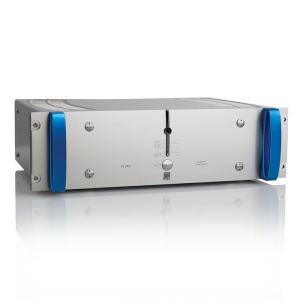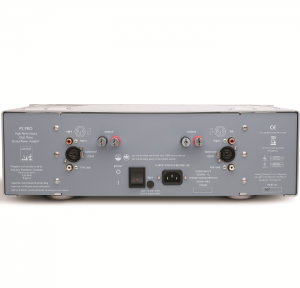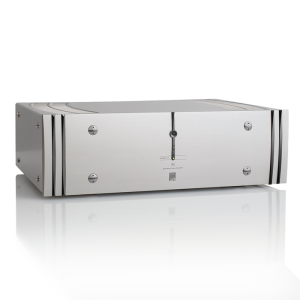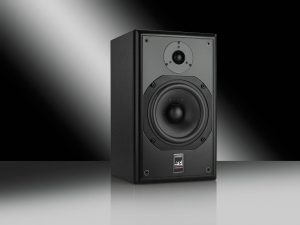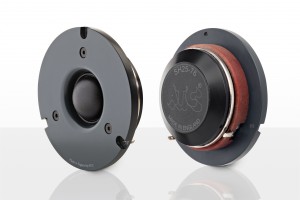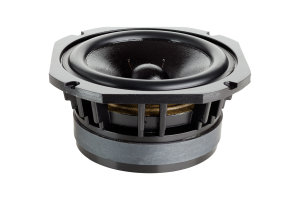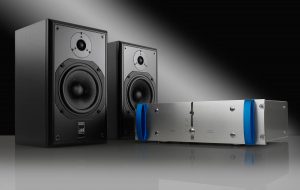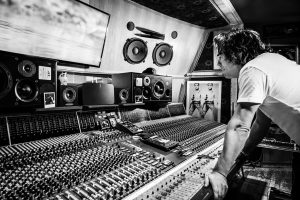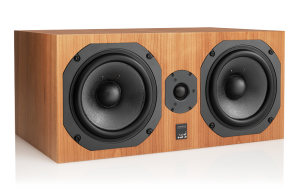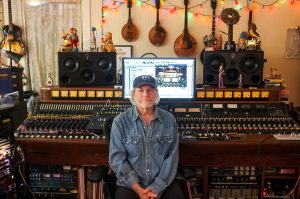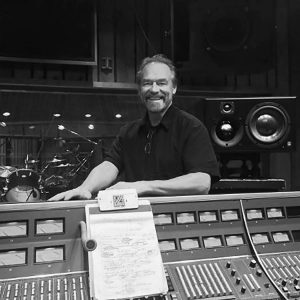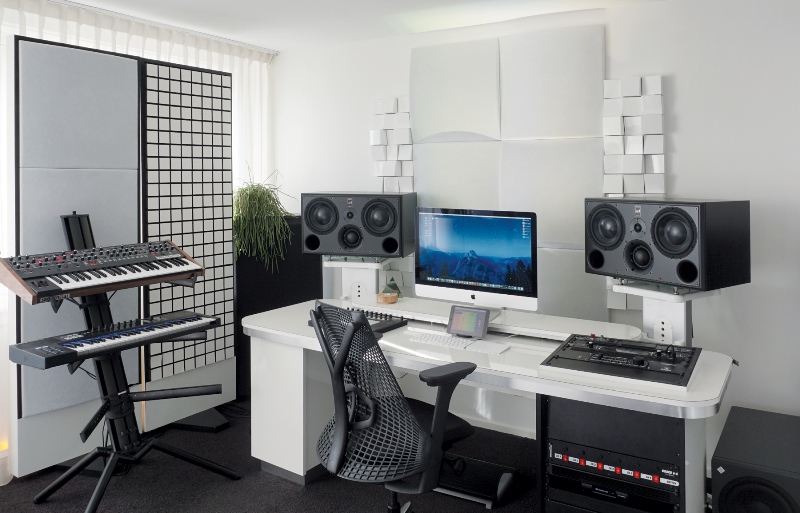Latest News
ATC announces availability of P2 Pro Dual Mono Power Amplifier
ATC is proud to announce upcoming availability of the P2 PRO Dual Mono Power Amplifier — a true dual mono design, delivering 300W of continuous power simultaneously from both channels to drive the most challenging loudspeaker loads with ATC’s signature virtues of wide bandwidth and ultra-low distortion — as of November 3rd…
Hand-built by ATC in the UK, as implied by name, the Class A/B P2 PRO Dual Mono Power Amplifier is a dual mono design, keeping the power supplies, signal, and return paths discrete. This approach ensures that the amplifier will achieve maximum signal separation with minimal crosstalk, and that intermodulation between channels via the power supplies is reduced to an absolute minimum across a frequency range of 400kHz. It also means that the power delivery from one channel cannot affect the specified power available from the other.
Within a new low-vibration 19-inch rack-mount chassis design featuring a precision machined 12.7mm brushed aluminium front panel, the P2 PRO Dual Mono Power Amplifier’s layout includes a massive, custom-made 400 VA low-noise transformer for each channel and an output stage involving three pairs of MOSFET devices per channel to achieve peak current output of over 15 amps. According to ATC Technical Sales Manager Ben Lilly, “The final design of these transformers is the result of seven design iterations with the goal of achieving best possible audio performance and lowest possible mechanical noise. This was achieved by using a very high-grade steel core which is then vacuum-impregnated with high-temperature resin, post-winding. The exceptionally low levels of mechanical hum/buzz, along with convention cooling, are vital features if the amplifiers are to be used in control rooms designed with lowest possible levels of background noise.”
Needless to say, with ATC’s unique ‘grounded source’ output stage, smooth power delivery and extremely low harmonic distortion is a given. Gain matches that of the P2 PRO Dual Mono Power Amplifier’s lower power P1 PRO Dual Mono Power Amplifier sibling so that they can be used together in passive bi-amp or tri-amp systems connected via ‘Link’ phono inputs/outputs.
The P2 PRO Dual Mono Power Amplifier offers both balanced XLR and unbalanced phono inputs, ‘Link’ phono outputs, proprietary speaker terminals, and a front panel-mounted power switch. Signing off, Ben Lilly lets it be known that this product has been a long time in the making due to two major factors — namely, new power supply design and a new top cover/lid design: “The mains power ‘soft start’ feature has been revised, slowing the rate at which the unit powers up. The design of the venting has also been revised with the steel mesh covering the heatsink vents being replaced by a beautiful acid-etched stainless steel insert. Not only does this component greatly enhance the amplifier visually, it also reduces lid/cover vibration.”
Weighing in at an impressive 21kg/46.2lbs, the P2 PRO Dual Mono Power Amplifier’s accomplished specifications similarly leave little to chance:
- Max Continuous Output Power : 300W (8Ω, 1% THD).
- Input Sensitivity: 2V rms (ref. 150W out).
- Input Impedance: 10kΩ/leg.
- Frequency Response: <2Hz – >400kHz (-3dB).
- Signal to Noise Ratio : >110dB (DIN).
- Crosstalk: >100dB.
- THD: >0.002%/-95dB.
The British-built P2 Pro Dual Mono Power Amplifier will be available as of November 3, 2016 at a UK RRP of £2,833.00 GBP (plus VAT). For more in-depth information, please visit the dedicated P2 Pro product webpage.
ATC Win at the 2016 What Hi-Fi Awards!
ATC have won awards in three categories at the annual 2016 WHat Hi-Fi Awards.
SCM11 Best standmount speaker £1200-£1500
Awarded 2006, 2007, 2008, 2009, 2010, 2011, 2012, 2013, 2014, 2015, 2016.
“It’s hard not to be totally enamoured by the ATC SCM11s. For the money, they seem to do everything right – and their solid curved cabinets look the part too. When it comes to speakers, or even hi-fi kit in general, there are few better ways to spend £1200.”
Learn more on the SCM11 webpage.
SCM19 Best standmount speaker £1500+
“These ATCs are analytical yet never sound clinical or passionless. They remain transparent to the original recording and system electronics. And when it comes to insight and honesty, we haven’t heard any better for the money.”
Learn more on the SCM19 webpage.
C1 system Best speaker package £2000+
“We suppose the highest praise we can offer ATC here is that it has provided a match for our considerably more expensive reference system. We can think of no better alternative for the money. A consummate triumph, to be sure.”
Learn more on the ATC multi-channel webpage.
To get the full details on these awards, please visit the What Hi-Fi Awards 2016 microsite. You can read about all the award winners in the offical awards issue of the magazine which, is available now.
New Product Launch – P2 Power Amplifier
Generating twice the power of its smaller P1 sibling, the P2 will drive the most challenging loudspeakers with ATC’s signature virtues of wide bandwidth and ultra-low distortion…
Hand-built by ATC in the UK, the P2 class A/B stereo power amplifier is designed to complement the brand’s range of hi-fi preamplifiers, both aesthetically and operationally. Rated at 300W continuous power per channel and developed in tandem with the P2 Pro studio amplifier, the ATC P2 is a Dual Mono design, keeping the power supplies, signal and return paths discreet. This approach ensures that the amplifier will achieve the maximum signal separation with minimal crosstalk, and that intermodulation between channels via the power supplies is reduced to an absolute minimum across a frequency range of 400kHz. It also means that the power delivery from one channel cannot affect the specified power available from the other.
Within a new low-vibration chassis design featuring a precision machined 12.7mm brushed aluminium front panel, the P2’s layout includes a massive, custom-made 400 VA low-noise transformer for each channel and an output stage involving 3 pairs of MOSFET devices per channel to achieve peak current output of over 15 amps. ATC’s unique “grounded source” output stage ensures smooth power delivery and extremely low harmonic distortion. The gain of the P2 matches that of the lower power P1 (150W/ch) so that they can be used together in bi-amp or tri-amp systems, connected via the amplifier ‘Link’ phono inputs/outputs.
The ATC P2 offers balanced XLR and unbalanced phono inputs, ‘link’ phono outputs, proprietary 4mm speaker terminals, and IR remote control.
Features
• Latest ATC discrete MOSFET grounded source output stage.
• Class A/B topology.
• 300W into 8 ohm continuous power O/P capability
• Dual mono-design ensures minimal crosstalk and inter-channel modulation.
• Entirely separate power supplies for high voltage audio, low voltage audio and logic/control.
• 400kHz bandwidth to ensure best possible transient reproduction.
• Vanishingly low distortion.
• Custom low noise toroidal transformers.
• New chassis design for reduced vibration and a more striking visual appearance.
P2 Specifications
• Max Continuous Output Power : 300W (8Ω, 1% THD)
• Input Sensitivity : 2V rms (ref. 150W out)
• Input Impedance : 10kΩ/leg
• Frequency Response : <2Hz – >400kHz (-3dB)
• Signal to Noise Ratio : >110dB (DIN)
• Crosstalk : >100dB
• THD : >0.002%/-95dB
• Dimensions (HxWxD) : 141x448x337mm (5.6˝x17.6˝x13.3˝)
• Weight : 30kg / 66lbs
• 6 year warranty
The P2 will be available from Monday 7th November and carries a UK retail price of £3125 inc. VAT (20%).
Soundstage Experience Review the SCM19
North American audio ‘Supersite’ Soundstage! Network has given a glowing review to the SCM19 two-way standmount loudspeaker.
The SCM19 is ATC’s most compact and affordable loudspeaker feauring ‘Super Linear’ (‘SL’) motor technology. ‘Super Linear’ motors use a proprietary iron powder for the area of the motor system closest to the voice coil, reducing the effect of current modulated inductance and, greatly reducing third harmonic distortion. Wether you like to immerse yourself in the technology or prefer to simply focus on the music, reviewer Wes Marshall thoroughly enjoyed the loudspeakers and here is just a taster of what he thought: 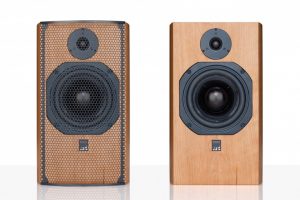
“The ATCs did a better job of catching the naturally decaying sounds of instruments in a room than any other speakers I know of.”
“Ever since I bought my first pair of ATC speakers 20 years ago, it’s been my opinion that you can never go wrong with ATC. I nominate Billy Woodman for the Audio Hall of Fame.”
Wes Marshall, Soundstage! Experience, October 2016.
You can read the review in full here at the Soundstage! Experience website.
ATC C1 5.1 System Awarded 5 Star Review
The performance of ATC’s products has once again been recognised by the team at What Hi-Fi with a glowing 5 star review of the new C1 5.1 System.
An unprecedented run of form has been extended with another 5 star accolade in November’s issue which, is available now. In a two page examination, which awards a maximum five stars in every review category: sound, compatibility and build, the What Hi-Fi team cites spacious, detailed and expressive sound quality with great integration as the major performance attributes, reserving particular praise for the subwoofer and centre elements.
Conclusion: “A consummate triumph, to be sure.”
What Hi-Fi November 2016.
The November issue of What Hi-fi is available in the shops now. You can read the review in full at the What Hi-Fi Website.
Entry Series – Now available in Satin Black & Satin White

New Product Launch: ATC SCM12 Pro
ATC are very proud to announce upcoming availability of the SCM12 Pro — an all-new high-performance, two-way compact passive nearfield monitor – as of Monday 3rd October.
As an all-new design, the SCM12 Pro proffers ATC’s acclaimed performance at a lower price point without compromising component quality and achieves this in a more compact, installation-friendly footprint ideally suited to nearfield monitoring as well as multichannel music and post-production applications.
“Anyone who has been waiting for an ATC nearfield with a smaller footprint, that is more easily installed, or that is more affordable, yet still delivers undiminished ATC performance, then the SCM12 Pro could be for them.” So says ATC Technical Sales Manager Ben Lilly, before adding: “ATC R&D Manager Richard Newman has poured the same knowhow, time, and passion into this new model that has made the rest of the professional product line so successful. Users will find that productions completed using the SCM12 Pro will translate beautifully to other systems and that their incredibly low distortion makes listening to them a pleasure — even after long hours in the studio. At under £1,150.00 per pair, they may prove ideal for those seeking to upgrade ageing, hard-to-repair passive studio monitors.”
Though the SCM12 Pro is the most affordable model in the professional range of loudspeakers, the monitor makes use of the ATC’s celebrated drive units for both the mid/bass and tweeter, both being meticulously hand built at the UK facility.
The tweeter is a 25mm/one-inch soft-dome designed around ATC’s unique dual-suspension technology. Unlike conventional tweeters, this precision part employs two suspensions, offering far greater control of the voice coil and dome motion — especially at higher sound pressure levels. The result is an extended high-frequency response with much greater clarity and definition due to the reduction in disturbing an-harmonic distortion. Listener fatigue is also greatly reduced, resulting in users being able to work for longer periods with greater accuracy.
At the lower end of the frequency spectrum, mid/bass reproduction is handled by ATC’s 150mm/six-inch proprietary CLD drive unit. Using a 45mm/1.75-inch diameter voice coil, and employing an FEA (Finite Element Analysis) optimised high-energy symmetric gap motor system, the driver is capable of tremendous dynamic range with minimal power compression. Cone construction is courtesy of another proprietary ATC technology that represents another advance in driver performance — namely, Constrained Layer Damping (CLD), a process that uses multiple laminated fabric cones to form a stiff, light, and tremendously well-damped structure. Speaking acoustically, this construction creates a smoother on- and off-axis frequency response and also a reduction in distortion leading to a more lifelike reproduction of source material. Meaningfully, judgements and decisions can be made more quickly, more accurately, and for longer periods of time by busy working audio professionals.
Put it another way: by employing exceptional drive units, the passive crossover can, by design, use the minimum number of components in a simple, second-order implementation. Indeed, the capacitors are all 250Vdc metalised polypropylene and all the inductors are air-cored types for minimal signal distortion. Additionally, all of the inductors are wound in house with very high-purity copper while large-gauge wire is used for the bass components to minimise signal losses.
Looking beyond the release of the superb-sounding SCM12 Pro, an install-specific sibling, the SCM12i, will be available as of Q1 2017. This model will feature threaded mounting points to mate with widely-available wall and ceiling brackets from K&M and Adaptive Technologies to simplify installation — incredibly useful in complex multichannel systems, such as those required by Auro 3-D, Dolby ATMOS, or DTS:X.
Discerning audio professionals always appreciate that exceptional passive monitors require exceptional amplification; as far as the SCM12 Pro is concerned, the best possible results will be achieved when it is partnered with ATC’s own range of stereo power amplifiers. As such, the 150Wper- channel P1 Pro dual-mono power amplifier is the perfect partner — both in terms of power output and its outstanding resolution, resulting from technology originally developed for ATC’s high-end active monitoring systems. So customers can comfortably make the upgrade to an all-ATC monitoring and amplification system, an attractive package price will be offered for purchasing the two products simultaneously.
Simple, well-engineered products almost always trump feature-rich, cost-engineered alternatives, and ATC’s SCM12 Pro has been duly designed with that philosophy very much intact. Its neutral fidelity makes it a very versatile proposition, one which — when backed up with the company’s industry-leading six-year warranty — makes for a high-value, longterm investment for anyone looking to upgrade their monitoring system. So now is the time to consider EQ’ing, balancing, and editing faster, with more consistent results and reduced listening fatigue using the latest nearfield monitoring marvel from ATC.
Audio professional or otherwise, witness the performance of these two new products alongside the company’s full professional product range by visiting ATC at EastWest Studios (Studio Two), 6000 West Sunset Blvd, Hollywood, California, USA from Friday, September 30 to Saturday, October 1, 2016.
ATC and US distributor TransAudio Group will also be hosting a press-only event from 7.00-8.00 pm on Friday, September 30 (just prior to the AES Party in Studio One at EastWest Studios).
The SCM12 Pro will also be being showcased Stateside by Vintage King Audio throughout the 141st AES Convention, September 29-October 1, 2016 at the Los Angeles Convention Center, Los Angeles, California… come check it out!
The SCM12 Pro will be available from 3rd October 2016.
UK Retail Pricing
SCM12 Pro £1146.00 ex VAT.
P1 Pro Power Amp £2165.00 ex VAT.
SCM12 Pro/P1 Pro Package: £2980.00 ex VAT (saving 10% over items purchased seperately).
SCM19A: Diverse Engineering Talent
SCM19A Review | Positive Feedback 09-06-2016 | By Michael Wechsberg | Issue 87.
“…also takes a company with diverse engineering expertise to cover electronics, mechanics, electro-mechanics, and other disciplines and this is rare. ATC clearly has the engineering talent required as they have been in business over 40 years and producing active speakers for many of them. The SCM19ATs are a wonderful advancement in the state of the art of active loudspeakers. You could easily spend three times as much on comparable separate components and not do as well. I strongly encourage you to seek out the ATCs and give them a listen.”
Read the review in full at Positive Feedback.
Tom Elmhirst augments ATC monitoring setup at ‘home’ in Electric Lady Studios
“The addition of SCM45A Pros perfectly supplement my second rig to bring it in line with my main control room monitoring setup. It’s important that both rigs can speak the same language so I can work and my assistants can work in both places comfortably and confidently.”
– Tom Elmhirst, 2016 (mix engineer).
NEW YORK, USA: specialist British loudspeaker drive unit and complete sound reproduction system manufacturer ATC is proud to announce that GRAMMY award-winning mix engineer extraordinaire Tom Elmhirst — already an advocate of ATC’s professional loudspeakers — has supplemented his second setup at Studio C within New York City’s legendary Electric Lady Studios with a pair of SCM45A Pro mid-size, high performance, active three-way studio monitors…
“Tom Elmhirst is a mix engineer based at Electric Lady Studios in NYC.” So reads the somewhat humble homepage for the talented individual in question. Yet the British-born specialist music producer and mix engineer’s many achievements at the helm of large-scale console — currently a Neve VR-72, about which he is on record as stating, “It’s a luxury… I can do ten things at once, but with a mouse I can only do one…” — speak louder than words. While most of the many millions of listeners who have heard the results of his sterling work with several of the biggest-selling recording artists around today will not know a Neve from an SSL, the man with the Midas mixing touch clearly knows what he is doing and must be doing something right with that mission-critical mixing and ATC monitoring setup aiding his course of action time and again.
As of June 2016, British singer/songwriter Adele’s third studio album, 25 — mostly mixed by Tom Elmhirst, has sold some 20 million copies, having become the world’s best-selling album of 2015. He has also manned the faders for Adele’s critically-acclaimed and commerciallysuccessful debut long-player 19 in 2008 and its 2011-released multiple GRAMMY award-winning follow up, 21, the longest-running number one album by a female solo artist in the history of the UK and US album charts. Credits in-between and beyond include Irish rockers U2’s thirteenth studio album Songs Of Innocence (2014) — famed for being announced at an Apple launch event and released on that same day to all 500-million iTunes Store customers at no cost — and 2016’s Blackstar, the twenty-fifth and final studio album by British singer/songwriter David Bowie — the iconic artist’s first and only album to top the Billboard chart in the US in the wake of his death — to name but a notable few.
But between those noted successes, Tom Elmhirst successfully transplanted himself and his sought-after services to Electric Lady Studios, the oldest working and thriving recording studio in New York City, founded back in 1970 by American guitar hero Jimi Hendrix. “I moved here about four years ago for both life and work reasons,” he reasons. “I wanted a change, having mixed in the same room in London for nearly 10 years. You can’t beat being part of an iconic studio based in the heart of Greenwich Village, so when Lee Foster — manager at Electric Lady Studios — showed me the only vacant room I jumped at the chance to set up home there!”
The tremendous workload of the time dictated that Tom Elmhirst had to hit the hallowed ground running, so speedily furnished his new ‘home’ with the aforesaid Neve VR-72 console while monitoring came courtesy of ATC, a new and enjoyable experience for the mix engineer extraordinaire: “I’d used monitors from another manufacturer for years, but they stopped making the drivers, so it became increasingly difficult to replace one if it blew. A friend of mine lent me a pair of SCM25A Pros for a few days when I first moved to New York and I enjoyed the experience so much I went ahead and got myself a pair of SCM50ASL Pros. The sub and the speakers are tuned to the room using an XTA DP44 DSP-based audio processor, so everything is balanced as a three-way system rather than just adding low end. Having the sub allows the woofers on the SCM50ASL Pros to work more efficiently as well. In the years that I’ve owned this system, I’ve found the ATCs to be invaluable and the majority of artists that I work for also enjoy the listening experience.”
‘A-list’ artists like Adele. “I was mixing ‘Skyfall’ right around the time that I got my ATCs,” adds Tom Elmhirst. “The accuracy of the SCM50ASL Pros proved invaluable for mixing such a complex song with so much orchestration.”
Obviously Tom Elmhirst knows what he likes and likes what he hears — so much so that he has augmented his ATC setup still further: “The addition of SCM45A Pros perfectly supplement my second rig to bring it in line with my main control room monitoring setup. It’s important that both rigs can speak the same language so I can work and my assistants can work in both places comfortably and confidently.”
Chances are we won’t have to wait long to hear another chart-topping mix making its musical way out of Electric Lady’s Studio C. But by then Tom Elmhirst and his assistants will likely be enjoying the experience of working with those ATC professional loudspeakers on another one!
Photos by Drew Wiedemann.
New Product Launch: C1C and C3C Centre Channel Loudspeakers
Matching the acclaimed SCM7 and SCM11 loudspeakers, the new CIC and C3C designs introduce the prospect of all-round 5.1 channel accuracy…
ATC has developed two new centre channel speakers for multi-channel system applications. Available in two sizes and emulating their successful Entry Series SCM7 and SCM11 loudspeaker counterparts, the new C1C (V.3) and C3C (V.3) designs will deliver dynamic wide-bandwidth accuracy and outstanding vocal intelligibility at the centre of compact 5.1 channel ATC systems for audiophile film and music devotees.
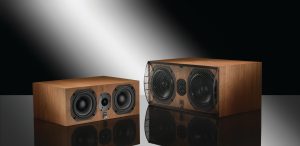 Compatible Tweeters
Compatible Tweeters
Matching the monitors, the C1C and C3C driver systems feature ATC’s acclaimed SH25-76 dual-suspension tweeter, designed and built in-house according to the brand’s rigorous low-compromise regimen for exceptionally low distortion and an extended high frequency response. The tweeter’s 15,000 gauss (1.5 tesla) neodymium magnet has a black heat-treated top plate, which dissipates heat away from the voice coil to maintain high power handling and low power compression. A precision-machined 5.5mm rigid alloy waveguide provides optimum dispersion, a flat on-axis frequency response and resonance-free operation.
Compatible Mid-Bass Drivers
In each centre-channel system the tweeter sits between two mid-bass drivers identical in design to those employed by the corresponding L/R main loudspeaker. The CIC utilises the highly linear 125mm ATC mid/bass driver of the SCM7, featuring a 45mm soft dome – exceptional for its horizontal dispersion of mid-band frequencies – and a huge 3.5kg high-energy magnet system, which includes a 45mm ribbon wire voice coil, meticulously milled and formed by ATC. The new C3C design uses the SCM11’s CLD 150mm mid-bass driver incorporating a 45mm soft dome. Exclusive to ATC, Constrained Layer Damping offers reduced harmonic distortion between 300Hz and 3 kHz, an extended frequency response and improved off-axis performance.
Compatible Crossovers
The new C1C and C3C systems incorporate new crossovers developed from the SCM7 and SCM11 designs, involving metallised polypropylene capacitors, large air cored inductors and ceramic wire-round resistors to offer superior power handling and clarity. Consequently, and in common with the SCM7 and SCM11, the centre-channel systems exhibit an impedance curve free from low values and extreme phase angles, presenting an easy load for amplifiers of 75 to 300 watts.
ATC’s new 5.1 channel systems
Two new compact ATC 5.1 channel speaker systems combine the C1C and C3C with the SCM7, SCM11 and ATC ‘C1 sub’ active subwoofer to energise multichannel applications with the brand’s signature virtues of neutral fidelity, wide bandwidth and high dynamic range. Deploying identical high performance, low distortion acoustic design throughout, the C1 System comprises four SCM7s, the C1C, and the C1 Sub. The C3 system unites the C3C with matching SCM11s in the front, and for ‘family-friendly’ installation, the SCM7s in the surround positions.
C1 Subwoofer
ATC’s C1 Sub active subwoofer is a compact, substantially braced design, incorporating a hand-built 12” (314mm) ATC bass driver and a fully discrete ATC 200W MOSFET power amplifier. Supplied with full remote and fascia mounted control over crossover frequency, gain and phase, its response may be calibrated for customised music and home theatre modes. Line and speaker level inputs are supplied together with a 12V trigger jack.
Matching Aesthetic Design
Engineered to complement the SCM7 and SCM11 both visually and acoustically, the CIC and C3C employ a high quality cabinet construction, braced for high rigidity and damping. All system components are hand- finished in either real cherry-wood or black ash veneers.
Manufactured entirely in-house, ATC’s C1C and C3C centre-channel designs offer the ownership of hand-built, finely-engineered speaker systems, world renowned for audio accuracy. Like all ATC products, the new centre and 5.1 channel systems are backed by a six-year warranty.
Pricing: Please contact your local authorised dealer or distributor for pricing in your region.
Availability: 12th September 2016
NASHVILLE ICON BUDDY MILLER SETTLES DOWN WITH ATC SCM45A MONITORS
NASHVILLE, TENNESSEE – AUGUST 2016: Buddy Miller is a Grammy Award-winning producer, songwriter, guitarist, and engineer. After getting his start in the late 1970s in New York City and Austin, he moved to Nashville and went on to produce dozens and dozens of big- and small-name talents, including Emmylou Harris, Patty Griffin, Shawn Colvin, and Robert Plant.
When he’s not on the road, Miller spends some of his days working out of his home studio with his wife, the talented singer-songwriter Julie Miller, who long complained that the studio monitors they used sounded unpleasant – until at last Miller found ATC monitors. The ATCs combine the accuracy and detail needed for mission-critical audio work with the joyful listening experience craved by lovers of great music. Building on three years’ success with ATC SCM25As, Miller recently upgraded to ATC SCM45As, which deliver greater bass response via two low-end drivers and greater high-end clarity with ATC’s made-in-house SH25-76S tweeter.
“Every link in the recording chain is important and it all adds up incrementally to the finished work,” Miller said. “But the monitors are the final link and the only window into what’s going on with all the other links. So I’ve long felt that the monitors have to be as good as they can possibly be. But at the same time, a lot of monitors are hard to listen to all day long. Julie is especially sensitive to the unpleasantness of most monitors. There were many times when we quit working because she just couldn’t take it any more.” Consequently, Miller spent over 25 years moving from one monitoring system to the next, trying to find something that was accurate enough to ensure consistent translation and yet truly pleasurable to listen to.
In the meantime, Miller built out the other components of his home studio, which is now centered on a vintage 28×24 Trident B-Range analog console, an MCI two-inch sixteen-track tape machine, Pro Tools HDX, tons of outboard gear (thirty-two channels of mic pres including a bunch of Telefunken V76 preamps, new and old Urei 1176s, a Fairchild 670, BAE1073s, DBX 160s, a Universal Audio LA-2A, a Manley Massive Passive, et al.) and a fantastic microphone collection. He even has a plate reverb system in his basement! His long, long search for accurate, but pleasant-sounding, monitors ended three years ago when he was working in another studio that had ATC near fields.
“When I heard the ATCs, I thought, ‘Whoa! This has everything!’,” he said. Miller purchased a pair of ATC SCM25A near field monitors, and he and Julie relished their inspiring (and yet still very detailed) sound. “The ATCs are so incredibly detailed in the midrange,” he said. “I can hear all of the reverb tails and delays – really everything that’s going on in a recording. The imaging is stunning. As a result, my recordings translate on any other system. They’re totally solid. And best of all, Julie loves to listen to them, so we get more work done and we get it done more enjoyably.”
These days, Miller likes to record with the entire band in the control room (sometimes even including the drums!) and with the singer in an adjoining room that has good line of sight to the control room. He’s had ample opportunity to perfect that technique: he served as Executive Music Producer for ABC’s drama Nashville for the past three seasons, which required producing and recording sixty to eighty songs per season, each with three recorded versions (a stripped-down songwriting version, a “live” version for the scene, and a polished studio version). In addition, Buddy hosts an ongoing weekly Sirius XM radio show that combines live recordings of artists with conversations.
Recently, Buddy upgraded their ATC SCM25As to ATC SCM45As. Both monitors are three-way designs, but the SCM45A adds as second 6.5-inch woofer for greater bass output. “I prefer not to work with subwoofers, but I wanted a little bit more bass from the monitoring system – not because it would affect my mixes so much, but because it would be more fun,” he said. “So when ATC released the SCM45A – which is essentially the monitor we had fallen in love with plus more bass – I jumped at the opportunity. They sound awesome, and they have so much output and low end that I got rid of my bigs. I have all the client-impressing-bigness I need from the SCM45As!” In addition, Miller is enchanted with the new ATC SH25-76S tweeters, which are now stock in the SCM45As. “The new tweeter is great!” he said. “The high end is beautiful and gives me even greater clarity and detail so I can get lost in the music.”
Transaudio Group – ATC US Distribution
Review: SCM40A – Stereotimes
The SCM40A continues to gain fans in the U.S. with Allen Edelstein of Stereotimes the latest critic to be taken in by the loudspeakers outstanding performance.
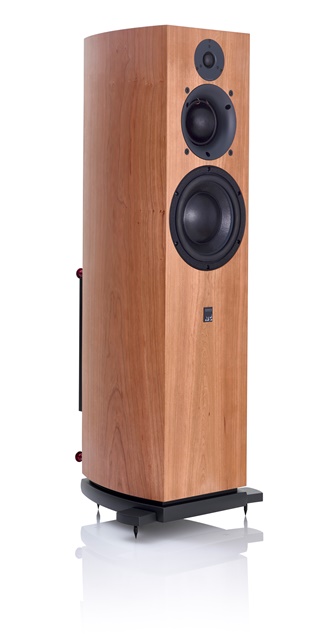 Allen has reviewed the SCM40A for online magazine, Stereotimes and the review is live now. Here is a just a little insight into Allen’s thoughts on this compact ‘floorstander’ and why he thinks active design could be the way to go:
Allen has reviewed the SCM40A for online magazine, Stereotimes and the review is live now. Here is a just a little insight into Allen’s thoughts on this compact ‘floorstander’ and why he thinks active design could be the way to go:
“Adding everything together and how easily the ATC SCM40A can be used to produce a simple, elegant, high performance system this is a heck of a speaker system. And if you want a speaker system that allows great live recordings to make you think the performance is real, this is a must audition.”
Allen Edelstein, Stereotimes, August 2016.
You can read the review in full here at Stereotimes.
ATC MONITORS SURROUND FAMED RECORDING ENGINEER MICHAEL BISHOP
“Seasoned veteran” is perhaps too weak a term to describe audio engineer Michael Bishop, whose passion for breathtaking audio capture has earned him ten Grammy wins in a career that has spanned nearly 45 years. He served as the Chief Recording Engineer for Telarc Records from 1988 up until 2008, when Concord Music Group closed Telarc’s in-house production team, and now partners in Five/Four Productions, Ltd. with two of his former Telarc colleagues, Robert Friedrich and Thomas Moore. A tireless advocate of cutting-edge technologies, Bishop was experimenting with 24-bit, 192kHz recording when most engineers were still coming to terms with 16-bit, 44.1kHz and has since moved on to record/release in DTS, SACD, and now DSD. Since 1999, Bishop has relied on ATC monitors to reveal all of the minute details that cumulatively add up to a world-class recording. Three of his most recent projects include the recording of two new pieces by Jonathan Leshnoff performed by Robert Spano and the Atlanta Symphony Orchestra & Chorus, a traditional multi-track studio session with Eighth Blackbird, and the hip-hop/orchestral fusion of Pharrell William’s collaboration with the Dallas Symphony Orchestra.
Bishop traveled to Atlanta’s Woodruff Symphony Hall – a space where he has recorded nearly one hundred times – to create the world-premier recording of Jonathan Leshnoff’s Symphony No. 2 and Zohar. Although he’s never been one to create “documentary-style” recordings, Bishop is riding the leading edge of the wave that is moving traditional classical recordings in the direction of movie soundtracks. “There’s a lot more activity on the engineer’s part,” he said. “The audience is expecting more detail and color, and modern composers are writing pieces that really require the microphone technique needed to capture all of the details, actions, and interactions.”
Amazingly, Bishop mixed all 28 microphones on stage down to a stereo mix live in the moment that he recorded using DSD technology at 11.2MHz, or 256 times greater than the benchmark CD rate (44.1kHz x 256 = 11,200kHz!!!). As always, he brought his ATC SCM150ASL monitors. “The ATCs play a crucial role,” he said. “I’m making all of my recording, mixing, and mastering decisions right there, and it is thus paramount that I have an accurate image of every detail. Moreover, the 150s have the size and presence to give the producer and conductor a true impression of the recorded piece, which closes the feedback loop and gets us to a winning take with all due speed.” At a session cost of $300 per minute for the orchestra, that’s obviously important. Direct-to-stereo mixes have always been a hallmark of Bishop’s work over the past few decades so that it’s second nature.
“With ATCs, I’m able to make, say, a one-inch change in the angle of a microphone and really hear its effect,” Bishop said. “Most monitors gloss over that kind of detail, but those Eighth Blackbird are the details that add up to a great recording. Moreover, every ATC loudspeaker, from the 20s to the 300s, provides that same consistent level of detail.” Indeed, Bishop tracked on ATC SCM25A nearfield monitors at IV Lab Studios in Chicago, where he recently recorded the Chicago-based avant-garde ensemble Eighth Blackbird performing pieces written by five different contemporary composers for their Hand-Eye release on Cedille Records. “Eighth Blackbird was closer to a modern studio session, with the backbones of songs laid down, and followed by overdubs and manipulations of the recorded material as dictated by the composers.”
Bishop and longtime collaborator and former Telarc producer Elaine Martone were under pressure to work quickly. “The detail revealed by the ATCs greatly aided our decision making process and enabled us to make good decisions on the spot. With any recording session, there are a million things to worry about and manage,” he said. “ATC’s consistency and truth remove one of the most potentially damaging variables – we’re confident that what we’re hearing is the truth. That puts Elaine in a comfortable place and lets her focus on the musical aspects. She doesn’t have to question what she’s hearing.”
The Dallas Symphony Orchestra commissioned pop artist Pharrell Williams to compose a piece that he called “Rules of the Game” that also involves dance, sculpture, and video. Bishop crammed into the pit with a 28-piece chamber orchestra augmented by a hip-hop rhythm section, triggered samples, and an unusually heavy dose of percussion instruments. Of the session’s 72 tracks, 24 were devoted to percussion! Arranger and composer David Campbell, who has done similar work with Justin Timberlake, Beyoncé, and others, led the effort.
“Working in the pit is the pits,” Bishop laughed. “We were jammed in there, and I had to mic everything very closely. Everyone was on in-ear monitors so that they could stay in time with pre-recorded samples. It was pretty uncomfortable.” Back in the friendlier environs of the Five/Four studio, Bishop is mixing the performance on his 5.1 set of ATC SCM150ASLs. “The turnaround is tight because the dance company needs the recording for performances without a live orchestra,” he explained. “As always, the ATCs make it easy to mix and know that my work will translate to any system whatsoever. Since moving to ATC seventeen years ago, I’ve never been surprised by what a mix sounds like on a different system.”
Transaudio Group – ATC US Distribution
3FM DJ Paul Rabbering chooses ATC SCM45A Pro
“The main reason I choose ATC was the details these monitors reveal really have an impact on me. It’s listening 2.0. The first time I heard these monitors in my own studio, they brought tears to my eyes. The pureness of the SCM45A, combined with its punch is something I have never experienced before.”
Paul Rabbering, July 2016.
Most people know Paul Rabbering as a DJ, presenting a two hour daily show on the Dutch national radio station, 3FM. He’s also a well-known voice-over artist on Dutch television. If that doesn’t ring a bell, alongside two other DJ’s, Paul presented Serious Request 2015, a 6 day live radio show from a Glass House in the centre of the city Heerlen, raising over 7 million Euro to help children in war zones.
But this versatile media man has yet another, lesser known quality. Paul owns a private studio where he transforms his creative ideas into concrete music productions. Some weeks ago when Paul visited the Dutch ATC distributor Helios, he got infected with the, “ATC Bug”. Fortunately there is a cure for this illness. After the purchase of a pair of SCM45A Pro’s, the fever vanished like snow in the sun!
“I’m very happy with the service of Helios. Ulmt was extremely patient and gave me the opportunity to listen to various songs on many different monitor brands and models before making a decision. The SCM45A took away the last bit of doubt I might have had. I will never forget the moment when we played Deadmau5 – some chords at a rather hefty volume, the transparency, deep bass, speed, that big sound. I was totally convinced. It feels good having nothing left to desire.”
Paul Rabbering, July 2016.
Paul Rabbering – Facebook Paul Rabbering – Wiki Paul Rabbering – 3FM



